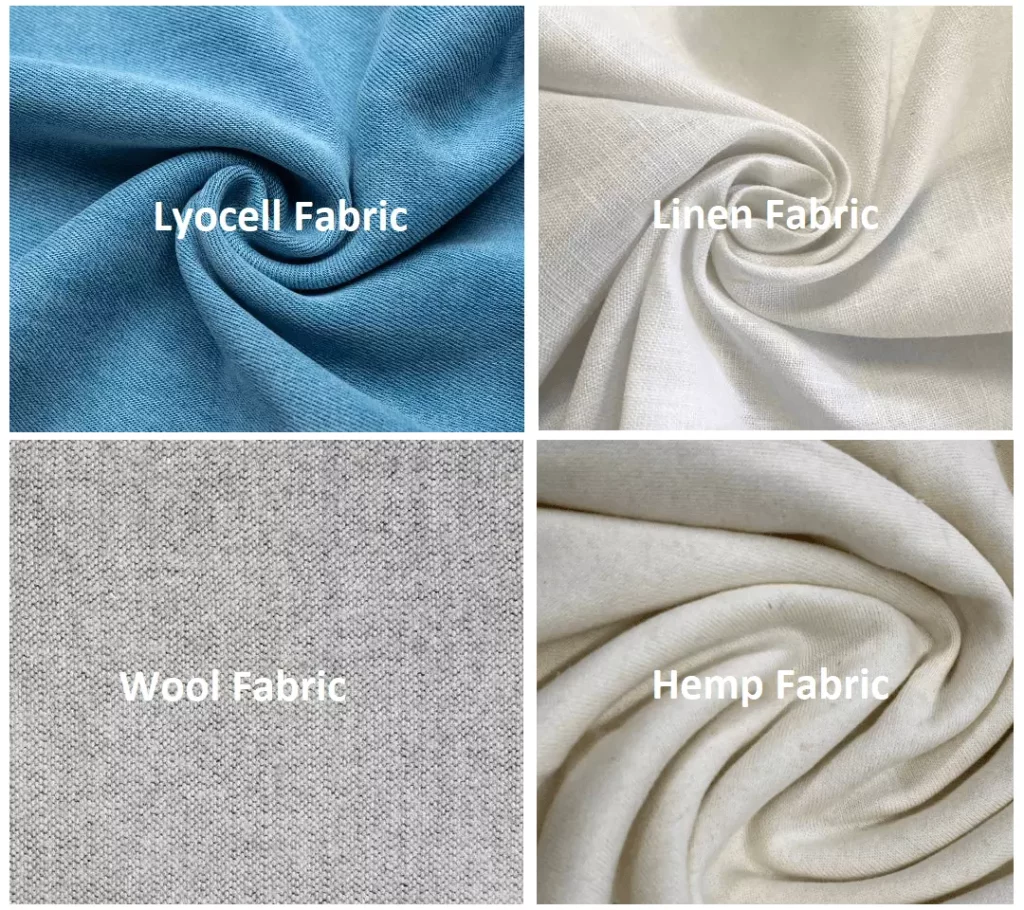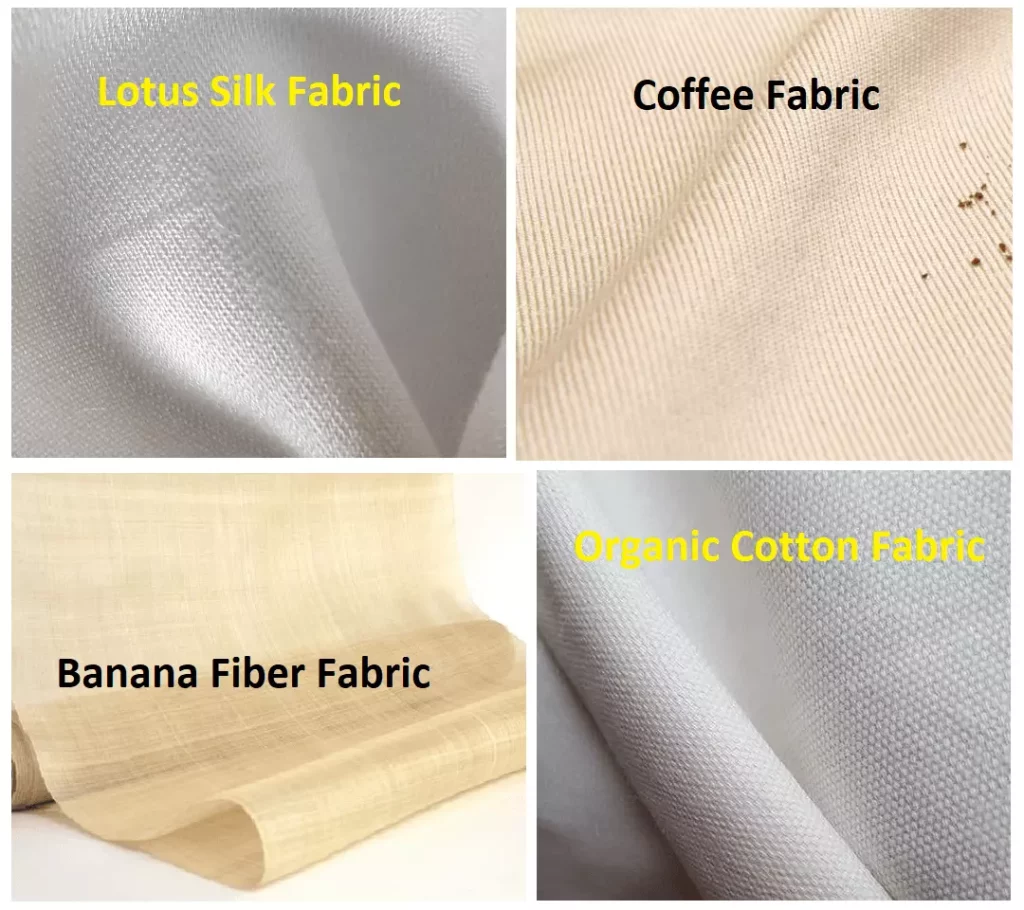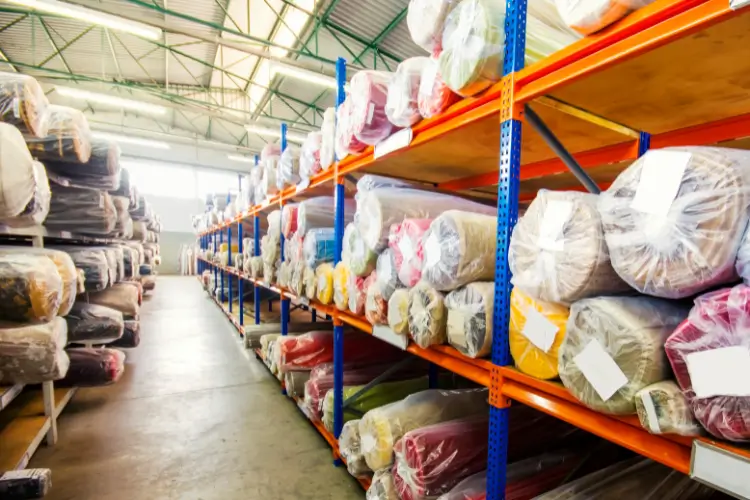The fashion industry has been causing severe environmental consequences for hundreds of years. Therefore, many fashion and apparel brands are moving towards sustainable fashion trends in order to protect the environment. One of those criteria is to use environmentally friendly fabrics.

Why Sustainable Fabric?
Although there are many fabrics that are made from natural elements. In the weaving process, people use chemicals to create durability or help the fabric have good dyeing ability. These chemicals are not properly treated before discharging into the environment which causes air and water pollution.
The fabrics are woven from synthetic materials and after using these materials we threw them out in nature. Where they will become large piles of non-biodegradable garbage. Slow or no decomposition will cause the environment to bear a large amount of waste which creates pollutants in the atmosphere.
In order to grow plants to harvest for preliminary processing to get fibers. For quick plant growth, several types of pesticides or growth agents are used. . These pesticides/growth agents have also been gradually seeping into the soil and causing adverse effects. That contaminates the soil and subsequently water resources.
The heavy destruction that the fashion industry brings to the environment in general and to fabrics, in particular, is increasing seriously. For this reason, people are now tending to switch to environmentally friendly fabrics. However, the quantity of this fabric is still very small.
What is the eco-friendly fabric?
Environmentally friendly fabrics are biodegradable fabrics. The process of creating fabrics does not release harmful substances that pollute the environment.
10 Types of Environmentally Friendly Fabrics
Many fashion brands as well as many fabric companies have constantly developed and created organic fabrics. These are:

1. Lyocell Fabric
Lyocell fabric is a fabric woven from the wood pulp cellulose component of woody plants. Unlike other fabrics, Lyocell has a closed production process, so the release of waste into the environment seems to be absent.
The woody plants used to make Lyocell fabric do not need pesticides but can still grow. After making wood pulp, there will be a catalytic process with amino oxides, but this amount will use continuously through many times of fabric making, so this amount is not released into the environment. As Lyocell fabric is made from natural ingredients, it will be highly biodegradable.
2. Wool Fabric
Woolen fabric is made from the hairs of animals. Therefore, these are extremely natural materials, without the use of chemicals or reactions to create fabric.
In addition, wool fabric is very durable, so people can use it for a long time. Limit the disposal of old woolen clothes into the environment. Wool fabrics are also highly biodegradable.
3. Linen Fabric
Linen fabric is made from the body of flax, which is also a completely natural material and does not contain harmful chemicals involved in the weaving process. Therefore, linen is also one of the environmentally friendly fabrics.
In the production process of getting the wood in the flax stem instead of incubating it in alkali or oxalic acid, the producer will soak the flax stalk in water. The job is to limit the harmful substances contained in alkali and oxalic acid.
Unlike synthetic fabrics, linen is biodegradable, meaning its constituents are likely to be absorbed into the environment in just a few years, not centuries.
In order to ensure that this fabric is really closer to the environment, it is imperative that the process of cultivating land and growing flax must not cause phenomena such as soil erosion, causing natural disasters for humans.
4. Hemp Fabric
Hemp fabric is made from the stem of the hemp plant, the fibers are considered close to the environment because they are derived from nature. In many studies by environmental experts, hemp fabric when grown requires less land than cotton, and its release of toxic substances seems to be absent.
Hemp is known as carbon-negative raw material. They emit very little carbon, but on the contrary, absorb more. On the other hand, there is no need to use any pesticides or herbicides to grow hemp. This is a great advantage when the hemp growing area does not have to be exposed to harmful chemicals.
This fabric is also biodegradable, so the environment does not have to bear a large amount of waste from the material.
5. Lotus Silk Fabric
Lotus silk fabric is a special fabric made from the fibers of the lotus stem. The part that looks like it will be abandoned. This is a completely natural fiber, so the material will certainly be able to decompose in the environment.
In the process of separating fibers or weaving, no chemicals are used, so the fibers are not only environmentally friendly but also harmless to the skin. However, because lotus silk fabric is handmade, it takes a lot of human effort as well as limited materials. Therefore, this is a fabric that is not produced much, the price is high, and so people rarely use it.
6. Organic Cotton Fabric
Unlike regular cotton yarn, organic cotton fiber is collected from cotton plants that are completely grown using non-GMO seeds. In the process of growing plants, do not use fertilizers or pesticides to promote plant growth. This is a new breakthrough in growing cotton to help the environment limit the problems of soil or water pollution.
In the production process of fabric yarn, all stages from harvesting, refining cotton fibers, weaving, and dyeing fabrics must comply with the set quality standards. In the process of creating fabric fibers instead of using chemicals, manufacturers will use organic methods to keep the fibers safe, especially suitable for almost all skin types.
While using organic cotton you will feel that this is a very soft material, always creating comfort for the wearer, and maximizes the advantages of cotton such as high breathability or comfort and good sweat absorption.
7. Coffee fabric
This special type of fabric is developed by Singtex Company from Taiwan. Taking advantage of the processed coffee grounds combined with a polymer to form a synthetic material. It is possible that every 3 cups of coffee and 5 plastic bottles can produce one shirt. Although the material uses polymer components, this is recycling. Helps to limit the waste of plastic bottles in the environment, which takes a while to decompose.
The coffee fabric has a much greater absorbent capacity than cotton fabric. Not only that, the fabric can also deodorize and resist UV rays very well. The coffee fabric reduces CO2 more when produced than other fabrics.
8. Orange Peel Fabric
It is a fabric woven with yarn taken from the peel of an orange. In 2014, Orange Fiber was founded by two famous designers in Italy, when they came up with the idea to turn the discarded parts of oranges into fabrics with a surface similar to silk. The orange peel will be separated from cellulose and then spun into fibers.
9. Banana Fiber Fabric
It is a fabric that is taken from a discarded banana stem. In the process of growing banana trees, there is no need to use fertilizers or any harmful chemicals. When the banana tree matures, the fruit is harvested, and the banana body will be kept for lychee production. Banana fiber fabrics are considered to be very durable fabrics because they have mainly natural components such as cellulose, hemicelluloses, and lignin. Banana fiber fabric is also very breathable and has high moisture absorption.
10. Milk Fabric
It sounds hard to believe, but with the advancement in weaving techniques, nowadays fabrics are also made from discarded milk residues. Litchi is formed by Casein, which is a protein found in cow’s milk. Milk fabric is durable, and has a soft and smooth texture like silk. It takes only 2 liters of water to produce 1kg of fabric from milk. Meanwhile, it takes 20,000 liters of water to make 1 kg of cotton yarn.
Besides, there are also some very eco-friendly fabrics that are extracted from natural ingredients such as algae, nettle, and barkcloth. Although sustainable fabrics are very expensive, People still want to lead a life with fresh air, a life that says no to pollution.
Although there are many fabrics derived from nature and plants, the production process of fabrics uses many chemicals, which makes them unsustainable and environmentally unfriendly fabrics. I hope that in the future, more manufacturers will pay attention to and improve the weaving process, in order to promote green, clean and beautiful environmental protection.

